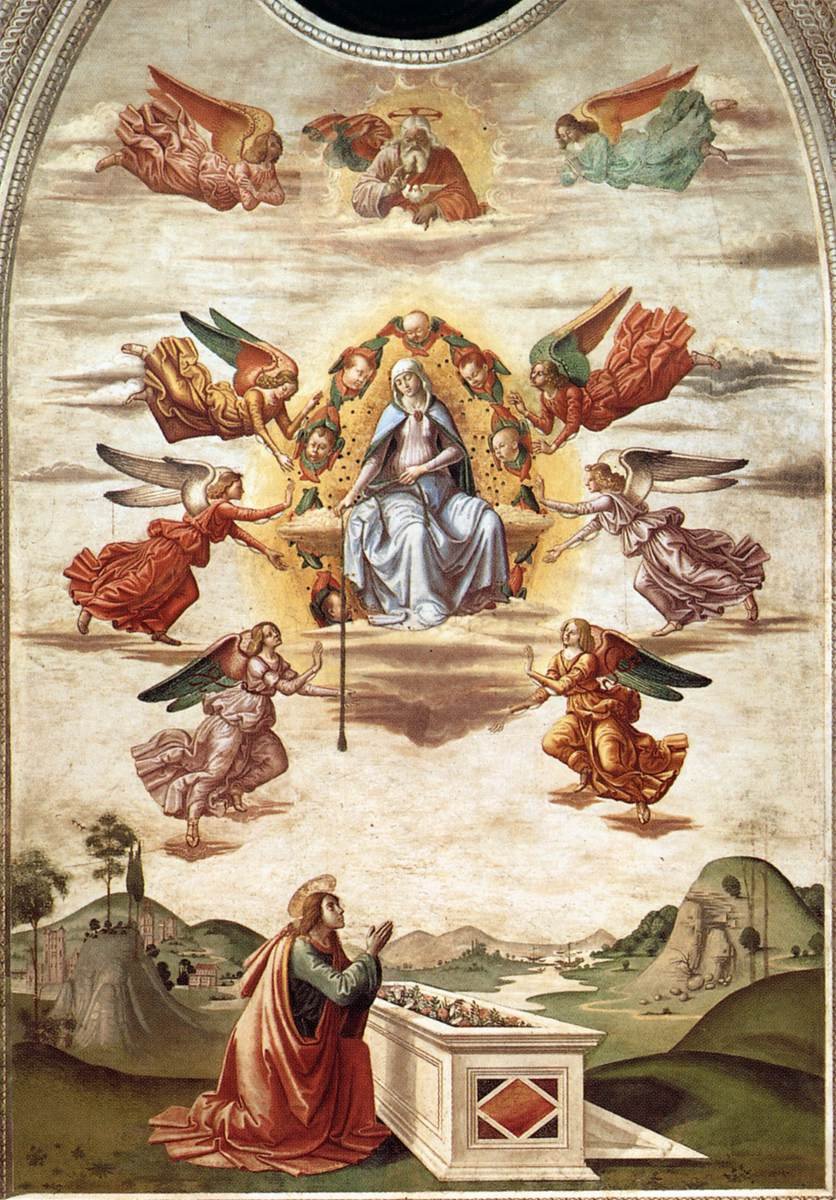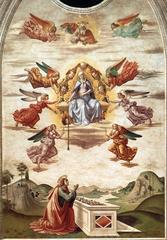
Baroncelli Chapel Visiting Hours, Tickets, and Florence Historical Sites Guide
Date: 14/06/2025
Introduction
Nestled within the renowned Basilica di Santa Croce in Florence, Italy, the Baroncelli Chapel is a remarkable testament to the city’s rich tapestry of art, history, and spirituality. Commissioned by the influential Baroncelli family between 1328 and 1338, the chapel served as both a private devotional space and a family mausoleum, as well as a powerful symbol of Florentine social status and patronage. For visitors seeking to immerse themselves in Florence’s artistic heritage, the Baroncelli Chapel offers a window into the transition from medieval Gothic to early Renaissance art, most notably through the stunning fresco cycle by Taddeo Gaddi—Giotto’s foremost pupil—and the renowned Baroncelli Polyptych attributed to Giotto and his workshop. These masterpieces, along with the chapel’s intricate architectural details, stained glass windows, and later sculptural additions, showcase the innovative use of color, light, and narrative that would shape Renaissance art.
As an integral part of Santa Croce, often called the “Pantheon of the Italian Glories,” the Baroncelli Chapel exemplifies the interplay between art, faith, and civic identity that defines Florence’s legacy. This comprehensive guide provides essential information—covering visiting hours, ticketing, accessibility, and nearby attractions—to ensure a rewarding and memorable experience.
For further insights and visitor tips, consult the Santa Croce Opera official site, the Web Gallery of Art, and travel guides such as European Traveler and Baba Told Me.
Table of Contents
- Introduction
- Historical Background and Patronage
- Artistic Significance and Masterpieces
- Social and Spiritual Role in Florence
- Visiting the Baroncelli Chapel
- Nearby Attractions and Travel Tips
- Frequently Asked Questions (FAQ)
- Visual Highlights and Media
- Related Articles
- Conclusion
- Call to Action
- References
Historical Background and Patronage
The Baroncelli Chapel, situated at the right end of the transept in the Basilica di Santa Croce, was commissioned by the Baroncelli family—prominent bankers and merchants—between 1328 and 1338. Their investment in the chapel reflects the tradition among Florence’s elite to secure spiritual merit and social prestige through artistic patronage. The privilege of commissioning and decorating a chapel was reserved for those who could make significant financial contributions, and the Baroncelli’s support of the arts was a public testament to their prosperity and devotion (Baba Told Me, Italian Reflections).
The double-bayed chapel required expanding the basilica’s exterior wall, emphasizing the family’s influence. An original iron railing once separated the space, guiding visitors’ perspectives on the frescoes and altarpiece.
Artistic Significance and Masterpieces
Taddeo Gaddi’s Fresco Cycle
Taddeo Gaddi, a principal pupil of Giotto, painted the chapel’s celebrated frescoes between 1328 and 1338 (Florence As It Was: Taddeo Gaddi). These works narrate episodes from the life of the Virgin Mary, including the Annunciation to Joachim, the Presentation of the Virgin, and the Adoration of the Magi. Gaddi’s frescoes are notable for their narrative clarity, expressive figures, and advanced use of perspective and light—particularly in the “Annunciation to the Shepherds,” recognized as one of the earliest nocturnal landscapes in Western art (Web Gallery of Art).
A key innovation is Gaddi’s integration of painted illumination with the actual daylight streaming through the chapel’s lancet window, creating a dynamic interplay between art and architecture.
Baroncelli Polyptych and Later Additions
At the altar, the Baroncelli Polyptych, attributed to Giotto and his workshop, depicts the Coronation of the Virgin and served as the visual anchor of the chapel’s liturgical program (Web Gallery of Art). The stained glass window above, also designed by Gaddi, adds a luminous quality and is among the oldest surviving in Florence.
In the 16th century, the Giugni family—subsequent patrons—added significant sculptures, including Vincenzo Danti’s Madonna and Child (1568) and Baccio Bandinelli’s Dead Christ Supported by an Angel (1549–1552), enriching the chapel’s layered heritage (Santa Croce: Cappella Baroncelli).
Social and Spiritual Role in Florence
Beyond its artistic significance, the Baroncelli Chapel functioned as a family mausoleum, providing a sacred resting place and reinforcing the connection between earthly legacy and eternal salvation. The tomb of the Baroncelli, designed by Giovanni di Balduccio in 1327, exemplifies the shift from modest to monumental funerary art—a trend that influenced Renaissance practice (Italian Reflections).
Within Santa Croce—home to the tombs of Michelangelo, Galileo, and Machiavelli—the Baroncelli Chapel stands as a microcosm of Florentine identity, embodying lineage, devotion, and the pursuit of artistic excellence.
Visiting the Baroncelli Chapel
Hours, Tickets, and Access
- Visiting Hours: The Baroncelli Chapel is open during the Basilica di Santa Croce’s general hours—typically 9:30 AM to 5:30 PM, Monday through Saturday, and 2:00 PM to 5:30 PM on Sundays and religious holidays. Always verify current hours on the official Santa Croce website or Florence tourism site.
- Tickets: Admission to Santa Croce includes the Baroncelli Chapel. Standard adult tickets are €8–€12, with discounts for students, children, and seniors. The Firenze Card is accepted for direct entry.
- Accessibility: The basilica and chapel are wheelchair accessible with ramps and elevators, though some areas may be limited due to historic architecture.
Guided Tours and Etiquette
- Guided Tours: Multilingual guided tours and audio guides are available and highly recommended for a deeper understanding of the chapel’s art and history.
- Photography: Photography without flash and tripods is generally allowed; always respect posted restrictions and the chapel’s sacred atmosphere.
- Visitor Conduct: Dress modestly, covering shoulders and knees, and maintain silence to respect the religious setting.
Nearby Attractions and Travel Tips
After exploring the Baroncelli Chapel, visit other Santa Croce chapels—including the Bardi and Peruzzi Chapels with Giotto frescoes—the Pazzi Chapel, the leather school (Scuola del Cuoio), and the lively Piazza Santa Croce with artisan shops and cafes. Allocate at least 1–2 hours to fully experience Santa Croce and its tombs of luminaries.
Tips:
- Book tickets in advance or use the Firenze Card to avoid lines (European Traveler).
- Check for restoration updates and special events on the official tourism site.
- Early mornings and late afternoons are less crowded for a more intimate visit.
Frequently Asked Questions (FAQ)
Q: What are the Baroncelli Chapel opening hours?
A: The chapel is open during the Basilica of Santa Croce’s general hours—usually 9:30 AM–5:30 PM Monday to Saturday, and 2:00 PM–5:30 PM on Sundays and holidays.
Q: How much do tickets cost?
A: Tickets to Santa Croce, including the Baroncelli Chapel, are €8–€12 for adults, with discounts available. The Firenze Card is accepted.
Q: Is the Baroncelli Chapel wheelchair accessible?
A: Yes, the basilica is wheelchair accessible, though some chapels may have limited access.
Q: Can I take photographs inside the chapel?
A: Photography is generally allowed without flash or tripods.
Q: Are guided tours available?
A: Yes, guided tours and audio guides are available in multiple languages.
Visual Highlights and Media
[Insert high-quality images featuring “Baroncelli Chapel frescoes by Taddeo Gaddi in Florence,” “Stained glass window depicting the Coronation of the Virgin,” and “Interior view of Baroncelli Chapel in Santa Croce Florence”.]
Virtual tours and interactive maps are available on the official Santa Croce website.
Related Articles
Conclusion
The Baroncelli Chapel is a timeless testament to Florence’s artistic innovation, devotion, and social history. Its exquisite frescoes, the renowned Baroncelli Polyptych, and subsequent sculptural additions collectively narrate the story of 14th-century Florentine culture and elite patronage. As both a sacred space and a monument to family legacy, the chapel offers visitors a richly layered experience that connects them with Florence’s vibrant past and enduring artistic spirit.
Planning your visit with practical details—such as ticketing, accessibility, and the best times to explore—will ensure you make the most of this historic jewel. For an enriched experience, take advantage of guided tours, audio guides, and virtual resources. Let the Baroncelli Chapel inspire your journey through one of Italy’s most treasured sites.
Call to Action
Ready to explore the Baroncelli Chapel and other Florence historical sites? Download the Audiala app for curated tours, insider tips, and easy ticket bookings. Stay connected on social media for the latest updates, events, and travel inspiration to make your Florence trip unforgettable!
References
- Baroncelli Chapel Florence: Visiting Hours, Tickets, and Historical Guide, 2025 (Santa Croce Opera)
- The Baroncelli Chapel in Florence: Artistic Significance, Visiting Hours, Tickets & Visitor Guide, 2025 (Web Gallery of Art)
- Baroncelli Chapel Visiting Hours, Tickets, and Cultural Significance: A Complete Guide to Florence’s Historic Treasure, 2024 (Baba Told Me)
- Baroncelli Chapel Visiting Hours, Tickets & Visitor Guide | Florence Historical Sites, 2025 (European Traveler)







































































